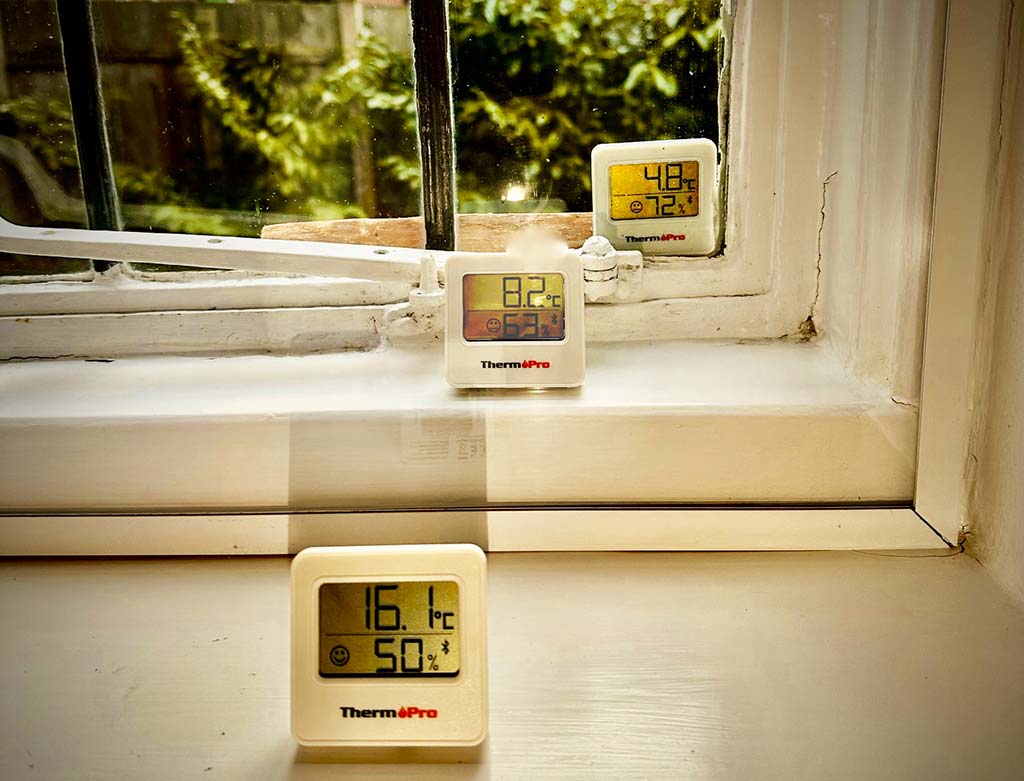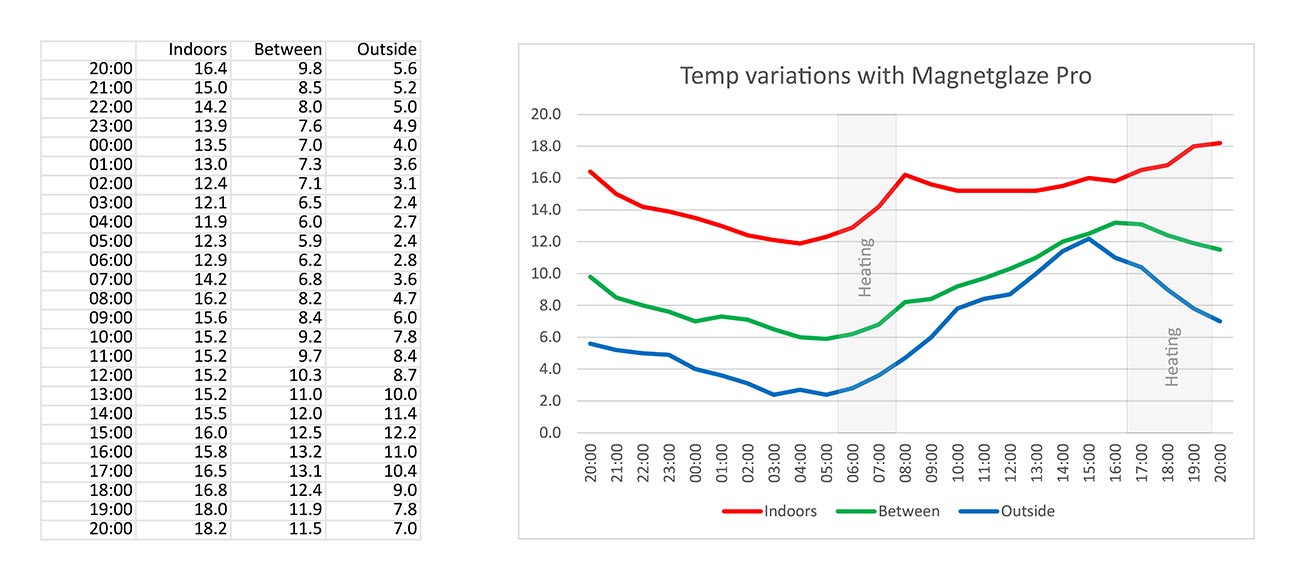Secondary Glazing Heat Retention – case study Feb 2023

Description of test
Secondary Glazing was required in a large family home dating from around 1900. The outer frames are steel Crittall windows with 3mm glass which were insulated with Magnetglaze Pro edging and 4mm Polycarbonate panes from secondarydiyglazing.com, who also supplied the Super Vinyl Foam draught excluders for the Crittal frames, making the outside draughts minimal.
The household includes two young children so the central heating is set in keeping with their school hours: 5:30-7:30 in the morning and 16:30-19:30 each evening. The thermostat is set to 19 degrees C.
The 24 hour test was conducted in February 2023 using 3 bluetooth thermometers, which provided rudimentary readings and were positioned as shown in the main photograph: Outside, on the outer sill; Between, on the frame between the outer window and secondary pane; Indoors, on the internal sill.
Analysis of results – see table and graph showing temperature change details
- Outside saw the biggest temperature swing from a cold night (2.4 deg C) to a sunny afternoon (12.2 deg C), the temperatures climbing steadily in the morning and falling away after sunset.
- Between the glazing layers the air temperature changed more slowly and was influenced by both the outdoor and indoor changes. However the outdoor temperature was a greater influence because of the transfer of heat through 3mm glass and a metal frame being quicker than through the 4mm Polycarbonate sheet. For example, during the 5pm to 7pm readings, the indoor temperature is rising due to the central heating but the air in the void between secondary and out windows is dropping because of the colder outside air having a bigger influence.
- Indoors has two trends. Whilst the central heating is on the temperature rises relatively quickly; once the heating goes off the drop is significantly slower than outside. For example, overnight at the start of the experiment, it took over 7 hours for room temperature to drop 4.5 degrees. After the morning heating goes off, because the outdoor temperature then rises quickly, indoor temperature drops only 1 degree over a 6 hour period.
- Conclusions – in this exercise, the secondary glazing makes a very significant difference. With the heating being on just 5 hours, the average indoor temperature was 8.5 degrees higher than outside. The maximum gap was at 08:00 (11.5 degrees) after the morning heating cycle, when cold outside (the feature photo was taken shortly after this point). At 15:00 in the afternoon, following sunshine, the smallest difference to the outside was 3.8 degrees, bearing in mind the heating had been off for over 7 hours.


